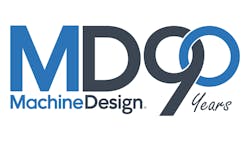As part of Machine Design’s 90th anniversary issue in January, we’ve asked industry experts to take a look at the present and future of technology and how it will impact the design and operation of manufacturing over the next decade.
Q: Before we look ahead, let’s take a look back at the last 10 years. There has been so much change, but what would you cite as one or two significant changes in the last decade?
Dr. Richard Soley: The rebirth of AI has been amazing. I built expert systems for a living nearly 40 years ago and then neural networks (“machine learning systems”) in the ’80s and they’re back again—except a million times faster and integrated with IoT.
Q: What’s the one technology update that every design engineer should be incorporating into their systems today? What’s the one technology upgrade that every end-user should be demanding?
Soley: There isn’t a single answer, of course. The suite of IoT, AI, and machine learning turns software engineering around completely in an era when computers are blindingly fast and computation and memory are essentially cheap. Ignoring IoT and AI in this era is just crazy. Digital twins are going to change the landscape in dozens of vertical markets.
Q: In areas such as AI, machine learning and IIoT, how quickly do you think these technologies will be adopted in manufacturing?
Soley: Although manufacturing probably took the lead in IIoT, it’s falling behind and facial recognition applications are quickly overtaking the manufacturing lead in AI. I think the advent of smart products will be even more important that smart manufacturing.
Q: What does manufacturing look like in 10 years? And what are some of the broad areas your company is focusing on to bring about those changes?
Soley: I’ve seen trends come and go in manufacturing for 40 years—flexible manufacturing, cell manufacturing, you name it. I think the success of the Internet in the consumer domain will finally fall into the industrial domain and be used in specific applications; we’re already seeing 3D printing of entire products which requires fast processing, vision and probably AI technologies like machine learning for quality control. We’re just beginning—in 10 years the manufacturing world will figure out how to integrate current solutions with new ones to build smart products on smart manufacturing lines.
About the Author

Bob Vavra
Editor Emeritus, Machine Design and Power & Motion
Bob Vavra is the former senior content director of Machine Design and Power & Motion.

